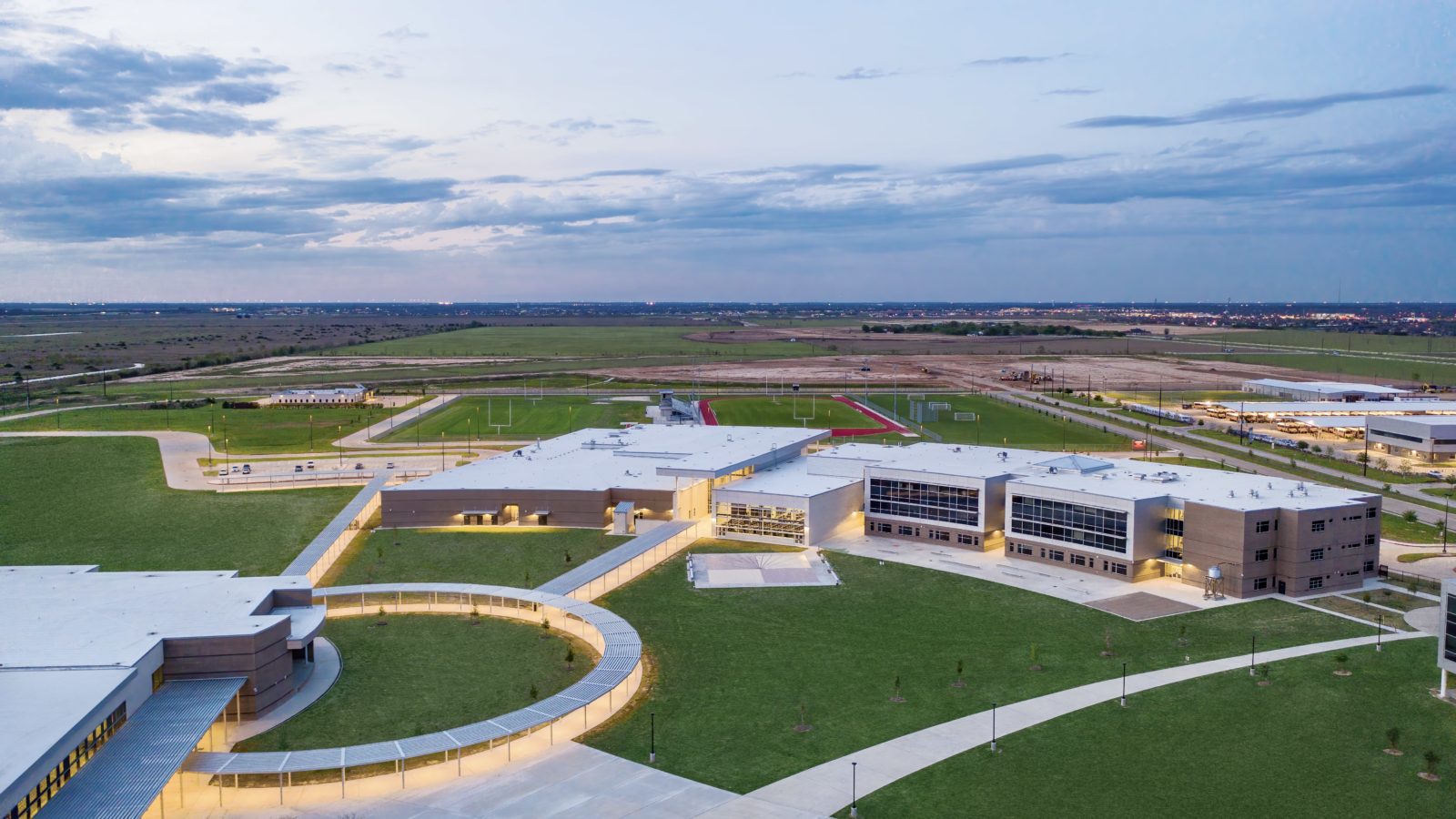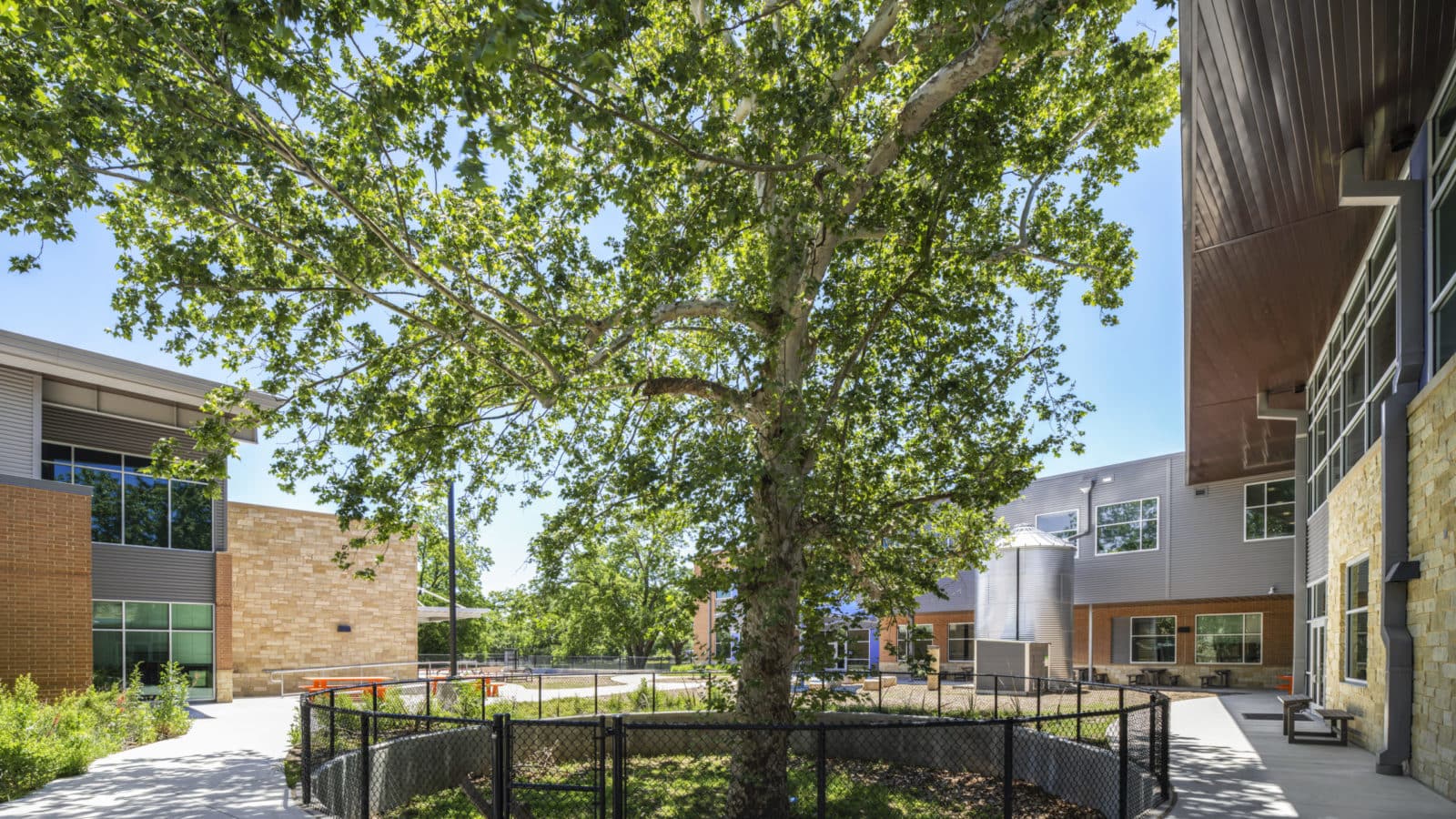The good news is, there are many design and architectural innovations that can keep students, faculty and staff comfortable, while also creating healthier, greener and even more engaging places to learn. And there’s federal funding to pay for it.
But, installing air conditioners without making other renovations, which is often the cheapest and most expedient option, raises a school’s fossil fuel consumption, ultimately making the problem of climate change worse.
Baltimore is an example of a district that’s had to rapidly upgrade for a changing climate. Six years ago, 75 out of its 140 school buildings, including Yorkwood Elementary, lacked air conditioning.
Now, that number is down to 11, according to Cyndi Smith, the district’s executive director for facilities planning, design and construction. “It has been a big challenge,” she said. “We have the oldest average-age buildings [of every district] in the state, going back to the late 1800s.”
Nationally, classroom heat is an environmental justice issue. This is because Black and Hispanic students are concentrated in urban areas that are subject to the heat island effect, in the South and Southwest, and in school districts with older facilities. In Baltimore, Maryland, just below the Mason-Dixon line, almost three quarters of the district’s students are Black, and another 17% are Hispanic. A 2020 paper calculated that excess heat might be responsible for as much as 5% of the race-based gap in test scores.
At Yorkwood, 96% of the students are Black. Redd saw the heat affect her students in multiple ways. “The children would be lethargic, due to the heat in the classroom.” Students used to sit for high stakes tests in the spring in sweltering weather. And, until this year, they couldn’t attend summer learning at their home campus; again, too hot.
Having air conditioning last school year “has actually been amazing,” Redd said. Instead of students trudging into the first days of school, resigned to the heat, she said, “There are smiles on the faces of students, teachers and parents.”
The state of Maryland committed a decade ago to universal AC in schools. They have paid for all this with a combination of local, state and federal funds, and not without some partisan back-and-forth.
Baltimore is one of the first round of recipients of the Renew America’s Schools grant, a clean-energy program that is part of the bipartisan infrastructure law; 88% of all applications included HVAC upgrades.
The Inflation Reduction Act also includes tax credits for geothermal heat pumps, a more efficient option for both heating and cooling. Depending on certain conditions, the tax credit could go up to 50%, according to a guide from the Aspen Institute’s This Is Planet Ed (where, full disclosure, I am an advisor). School districts can receive this credit as a cash payment with the new direct pay mechanism in the IRA, but details on how this will work will be forthcoming from the IRS.
Smith said that, ultimately, Baltimore’s education budget hasn’t allowed the district to improve energy efficiency in the ways she would have liked. “We need [new] windows in a lot of our buildings. We did kind of have to cut back and say, OK, even though it would be great for energy savings in the long run, the AC was our priority.”
Monica Goldson, who just joined Maryland’s state board of education, said her priority is to figure out how to “maximize efficiency while also meeting [districts’] climate change action plan recommendations.” This, she said, requires investing not just in HVAC and insulation, but in professional development for building maintenance staff.

When districts have the money and time, schools can be reimagined from the ground up to cope with extreme weather.
Dan Boggio, the founder of architecture firm PBK, which primarily designs schools and campuses, said he has seen increased interest in what he calls “hardening buildings against heat” over the past decade. When schools pull out all the stops for efficiency, he said, “We think we can come very close to saving 20% of the energy that the building uses over the year.”
The Alief Independent School District in southwest Houston, Texas, worked with PBK to create an exemplary early learning center that opened in August 2022.
To start, the district built on a site that was five acres larger than they’d normally choose and left it in its natural state as much as possible. “We’re always looking for sites with trees,” said Boggio. “It’s a heat sink.” Stormwater on the site runs off into ponds and wetlands, reducing flood risk — the more typical stormwater setup is “an ugly concrete pool with chain link fence around it,” said Alief’s Jeff DeLisle, director of maintenance and operations.
With input from the nonprofit The Nature Conservancy, landscapers planted the green space with native plants, grasses, flowering plants, trees and shrubs — a prairie landscape that resembles the Houston of a century ago. The green areas, water features and reduced concrete minimize the urban heat-island effect, and they’re already starting to attract native birds. The whole area is used as an outdoor classroom for the Pre-K students.
The early learning center was also designed with a “front porch” area of large overhangs that give children a shaded place to play. When Boggio gets a chance, he designs buildings with the longest axis east-west. “Believe it or not, it’s easy to shade the sun on the south side; it’s almost impossible on the west,” he said. The angle of the light comes too low for window shades.
Houston area schools have had air-conditioning since the 1960s, but now they need to do more, DeLisle said. “Temperatures are changing; conditions are getting worse. Used to be, our buildings were designed for 95 degrees max. Over the past 5 or 10 years as we’ve built new buildings, as we’ve remodeled buildings, we’ve asked our designs to plan for over 100 degree temperatures.”
This means heavy overhangs on windows, coatings on the glass to reduce UV rays, and white roofs to reflect heat. And then there are the behavioral shifts — like calling the groundskeepers in at 5:30 am, and pushing football practice into the evening.

Even when districts are doing everything they can to meet the demands of the moment, the future still feels uncertain. When Anthony Mays, the district superintendent of Alief, is asked what measures he imagines taking in 10 years as Houston’s weather continues to change, he grimaces. “That is an extremely scary thought,” he said.
“You see the strain on the machinery we have now. I don’t know what technology will look like to try to accommodate these extreme temperatures.”




